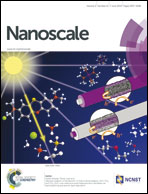A mild route to mesoporous Mo2C–C hybrid nanospheres for high performance lithium-ion batteries†
Abstract
In this work, we have developed a mild route to fabricate typically mesoporous Mo2C–C hybrid nanospheres based on a solvothermal synthesis and reduction–carbonization process. This work opens a low-temperature route to synthesize valuable carbides. The resultant Mo2C–C hybrid, for the first time, is used as an anode material in lithium ion batteries (LIBs). Compared with bulk Mo2C, the Mo2C–C hybrid exhibits much better electrochemical performance. Remarkably, the hybrid electrode can deliver a specific capacity of over 670 mA h g−1 after 50 cycles at 100 mA g−1, which is much higher than that of the bulk material (113 mA h g−1). Even cycled at a high current density of 1000 mA g−1, high capacities of around 400–470 mA h g−1 can still be retained for the Mo2C–C hybrid. It might benefit from the synergistic effect of the nanohybridization, effectively relieving the volume change during the repeated lithium insertion–extraction reactions and maintaining the integrity of the electrical connections. It is expected that the present synthesis strategy for the Mo2C–C hybrid can be extended to other nanostructured carbides with good energy storage performance.


 Please wait while we load your content...
Please wait while we load your content...